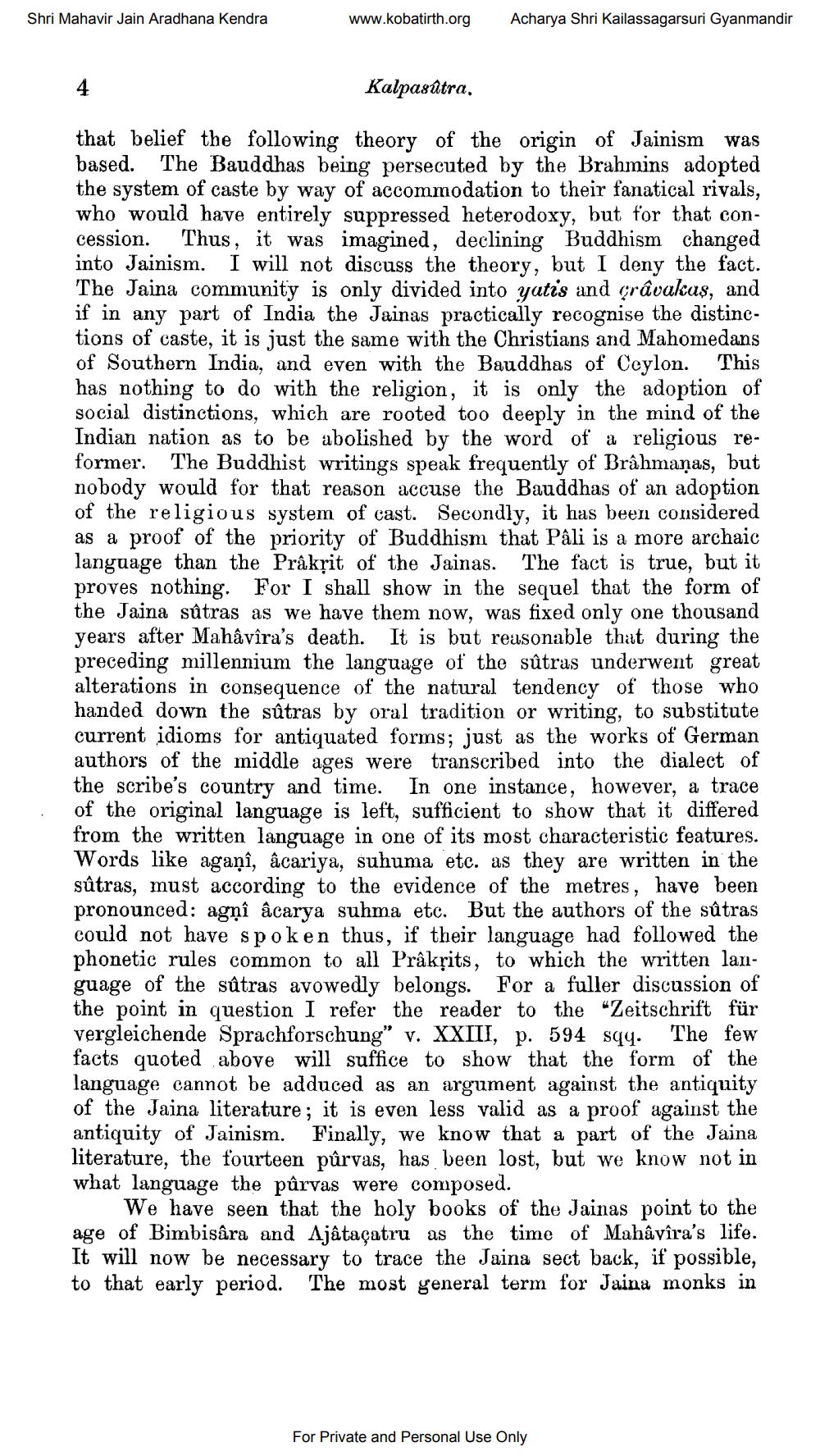________________
Shri Mahavir Jain Aradhana Kendra
www.kobatirth.org
Acharya Shri Kailassagarsuri Gyanmandir
Kalpasútra,
that belief the following theory of the origin of Jainism was based. The Bauddhas being persecuted by the Brahmins adopted the system of caste by way of accommodation to their fanatical rivals, who would have entirely suppressed heterodoxy, but for that concession. Thus, it was imagined, declining Buddhism changed into Jainism. I will not discuss the theory, but I deny the fact. The Jaina community is only divided into yatis and crâvakuș, and if in any part of India the Jainas practically recognise the distinctions of caste, it is just the same with the Christians and Mahomedans of Southern India, and even with the Bauddhas of Ceylon. This has nothing to do with the religion, it is only the adoption of social distinctions, which are rooted too deeply in the mind of the Indian nation as to be abolished by the word of a religious reformer. The Buddhist writings speak frequently of Brâhmaņas, but nobody would for that reason accuse the Bauddhas of an adoption of the religious system of cast. Secondly, it has been considered as a proof of the priority of Buddhism that Pâli is a more archaic language than the Prâkrit of the Jainas. The fact is true, but it proves nothing. For I shall show in the sequel that the form of the Jaina sûtras as we have them now, was fixed only one thousand years after Mahâvîra's death. It is but reasonable that during the preceding millennium the language of the sûtras underwent great alterations in consequence of the natural tendency of those v handed down the sûtras by oral tradition or writing, to substitute current idioms for antiquated forms; just as the works of German authors of the middle ages were transcribed into the dialect of the scribe's country and time. In one instance, however, a trace of the original language is left, sufficient to show that it differed from the written language in one of its most characteristic features. Words like agaņî, âcariya, suhuma etc. as they are written in the sútras, must according to the evidence of the metres, have been pronounced: agni âcarya suhma etc. But the authors of the sûtras could not have spoken thus, if their language had followed the phonetic rules common to all Prâkrits, to which the written language of the sûtras avowedly belongs. For a fuller discussion of the point in question I refer the reader to the "Zeitschrift für vergleichende Sprachforschung" v. XXIII, p. 594 sqy. The few facts quoted above will suffice to show that the form of the language cannot be adduced as an argument against the antiquity of the Jaina literature; it is even less valid as a proof against the antiquity of Jainism. Finally, we know that a part of
now that a part of the Jaina literature, the fourteen pûrvas, has been lost, but we know not in what language the pûrvas were composed.
We have seen that the holy books of the Jainas point to the age of Bimbisâra and Ajâtaçatru as the time of Mahâvîra's life. It will now be necessary to trace the Jaina sect back, if possible, to that early period. The most general term for Jaina monks in
For Private and Personal Use Only




